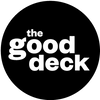TL;DR: Struggling to turn scattered ideas into a structured presentation? Start by mapping out the basics—your topic, goal, and audience—then use AI to refine it into a clear, compelling outline. A well-structured prompt ensures ChatGPT gives you expert-level insights, so you can focus on what really matters: crafting a great presentation with less stress.
Staring at a blank screen, wondering where to start? That’s where most presentation struggles begin. You have scattered notes, half-baked ideas, and maybe a key stat or two—but turning that into a structured, compelling deck? That’s the hard part.
The problem isn’t typically a lack of ideas—it’s the chaos of too many ideas and no clear way to shape them into something useful. We might have a few key details, data points, and idea fragments swirling around in our heads, but we're not quite sure how to corral them into a cohesive outline. This feeling of uncertainty or indecision about where to start can be paralyzing.
That’s where ChatGPT comes in.
Today, we’re breaking down a step-by-step prompt designed to take your raw thoughts and transform them into a cohesive presentation outline—fast.
Start by mapping out what you know
Before we even touch AI, let’s get the essentials down. Open a blank doc (Notepad, Word, whatever works) and jot down:
- Topic – What’s this presentation about?
- Goal – What’s the one thing you want the audience to take away?
- Audience – Who are they? What do they care about?
No need for full sentences—just get your thoughts down. For example, if you’re working on a presentation about rolling out a new productivity tool, your notes might look like this:
- Topic: Introducing [Tool Name] to the team
- Goal: Help employees get comfortable with the tool so they start using it
- Audience: Team leads and individual contributors who feel overwhelmed by new software
That’s enough context to give ChatGPT something solid to work with. Once you’ve got this foundation, we can feed it into ChatGPT to organize everything into a clear outline.
Use ChatGPT to craft your outline
Now that we have some basic content and understanding of the audience, we can move into shaping this into a structured presentation outline using ChatGPT. But before we jump in, one key detail makes a huge difference in the quality of AI-generated outlines: Tell ChatGPT what kind of expert you need it to be.
ChatGPT will give you generic responses unless you guide it with a specific expertise. If you need a strategic, high-level outline, you might frame it as "Please assist me as a Business Consultant and Keynote Speaker." If you're crafting something more research-heavy, you might say "Please assist me as a Data Analyst and Presentation Strategist."
This small tweak helps ensure ChatGPT frames the content correctly, prioritizes the right details, and mirrors the expertise you actually need. Here's an example:
Please assist me as an Instructional Designer, Content Strategist with Storytelling Expertise, and a Subject Matter Expert in Entrepreneurship and Self-Motivation.
Next, we’re going to clarify what the presentation is about and what the primary goal is:
The goal is to provide attendees with practical insights and strategies for cultivating self-motivation and resilience as entrepreneurs.
Now we have to give ChatGPT some additional context—key details so that it knows how long to make the outline and how to tailor the content to the location, format, and audience.
The target audience is individuals who operate as solo entrepreneurs, managing all aspects of their business on their own. My desired style/tone is motivational, empowering, and practical
The presentation should include the following:
1. Define what motivation is and why it is important for entrepreneurs.
2. Discuss common drivers of entrepreneurial motivation.
3. The importance of setting clear, meaningful, and achievable goals.
4. Provide strategies for overcoming common challenges.
Lastly, we have to be super specific about exactly what we’re looking for ChatGPT to output.
I’d like you to generate a detailed outline for the presentation, including main topics, subtopics, and key points to be covered under each section. Additional requirements:
- Make sure it fits the time frame and leave times for Q&A.
- Ensure the outline is structured logically to guide the audience through understanding, considering, and potentially adopting a plant-based lifestyle.
- Include an engaging introduction for my presentation. Begin with a compelling statistic or anecdote about the topic.
- Provide ideas on how to end with a call to action, a thought-provoking statement, or a memorable quote.
- Include additional content that would enhance the workshop.
Here’s the entire prompt template:
Remember anything in brackets—for example, "[Specify length]" and "[Give content details]"—is a placeholder. You fill these in based on the specifics of what you’re working on. Experiment with the prompt, tweak it to fit your style, and watch how it transforms your presentation writing skills.
Writing an outline can be time-consuming and stressful. AI helps you move faster to the parts that matter—shaping your narrative, designing visuals, and prepping for delivery. You’re still in control, just with fewer roadblocks along the way.

